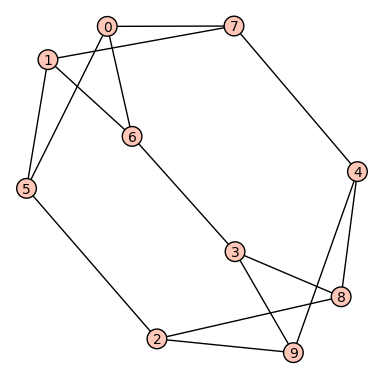Let $G$ be a simple connected graph that has at least one 1-factor. We'll define:
$G$ has property A iff it is edge-transitive.
$G$ has property B iff each edge belongs to the same number of 1-factors.
- Is it obvious that $A\implies B$ ?
- Is it possible to characterize the graphs that have B but not A?
I think that such graphs exist, but haven't been lucky yet. The "natural" candidates like a $C_{2k}$ along with its diagonals of a certain length don't seem to work but some come close to property B.

